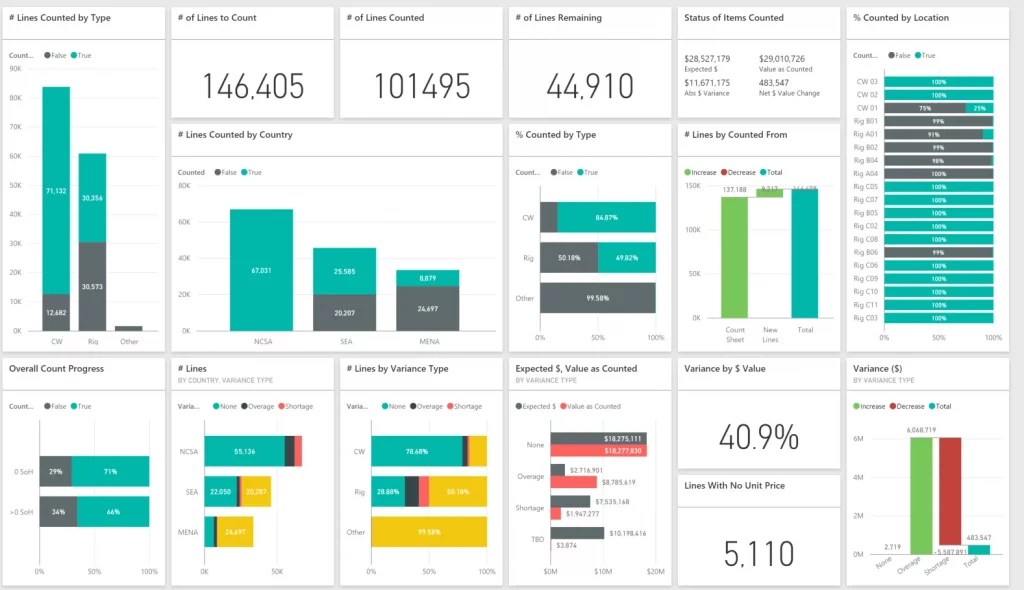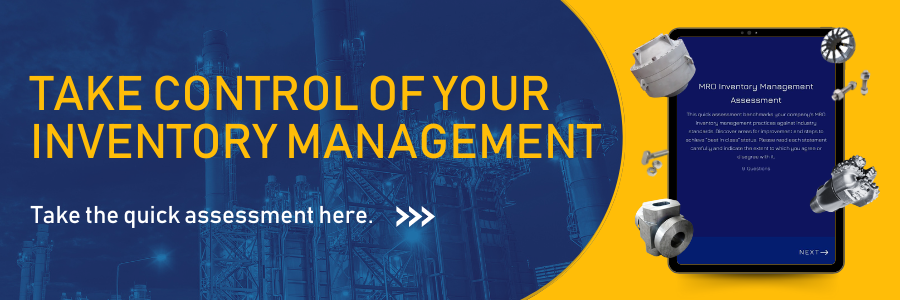Inventory Accuracy in the Oil & Gas Industry:
10 Things You Should Be Doing
If you want to cut costs, then inventory management is the right place to start.
Your ticket to success in this area is to maintain inventory accuracy. For that, you need processes for digging out the root causes of variances and ways of dealing with them.
Unfortunately, few companies have visibility into their inventory, and even fewer know how to identify and handle any issues.
Read on to discover ten of the top practices to improve inventory accuracy.
1. Keep your transactions in order
You can have all the systems you want, but your inventory accuracy will suffer if your team doesn’t maintain order during transitions.
We recommend you implement a policy requiring your staff to record all inventory without delay. This policy applies to moved, stored, consumed, shipped, loaned, or returned items.
It’s equally vital that you determine the specific period of time in which these transactions need to be recorded in the company inventory system. For example: when you use an item, it’s in the company inventory system upon issuance or within the same working shift (tour).
2. Make item & location labels clear & precise
If you take the time (or hire a 3rd party) to count your inventory, don’t make the job more complicated than it has to be. If you clearly label your inventory items,
You will ensure that nothing is forgotten or double-counted by properly and clearly labeling every inventory storage location and item. This practice is even more critical when your facility is on non-productive time and cannot locate required spare parts.
Also, ensure that any labels you decide to utilize are consistent, system printed, properly adhesive, and easy to read and change should the need arise.
3. Double-check the counts.
Typically businesses find out their inventory management system is out of whack during or after a downtime. And that’s way too late.
A seemingly obvious but not common practice requires managers not associated with the materials to spot-check the counts regularly. A rapid double-check can do wonders for your inventory accuracy.
During everyday operations, we advocate re-counting ten items per month counted in the previous month. If there are any variances, another sample should be run and counted. Multiple variances of the recount should trigger a full recount of the earlier months’ inventory count.
During a physical inventory count (especially if you outsource to a 3rd party), we recommend that your on-site managers verify all variances daily. It’ll help meet expectations and avoid surprises at the end of stock take.
4. Classify: Decide what Is and Isn’t an inventory item.
Inventory classification is one of the leading causes of confusion and disorder among Oil & Gas companies.
One issue that we consistently observe at many companies which causes confusion and/or variances in inventory is proper classification.
Everyone involved in the inventory management process should clearly understand what is and isn’t an inventory. One way to boost your inventory accuracy is to document that classification in your company’s policies and procedures.
5. Take advantage of new technology
Like many other areas of oil & gas operations, the inventory side of the business can become increasingly efficient with the rise of new technology if appropriately implemented. Rugged handheld devices save time and can be programmed to stream data directly, even in remote locations. Programs like RigServ’s “Living Dashboard” provide real-time access to dynamic, actionable reports. Be sure to take advantage of the new technology available so you can optimize the time and energy you invest in inventory.
It is essential to ensure that you measure what matters when implementing a new solution that is intended to increase efficiency and accuracy. One example we experienced recently was a customer who had recently implemented a new barcoding solution, and they boasted that they had achieved 100% utilization of the new devices. This situation surprised our team, as 100% utilization of any solution would be fantastic. However, under further review, they only measured the frequency at which the devices were synced to the system – not whether they had been used to input data. The actual transactional utilization was in the single digits (%).
6. Dig into the variance between quality & quantity
It’s not enough to simply count an item on a shelf. You must be able to account for any variances in quantity available versus the quantity counted. Most companies in the oil and gas industry miss this crucial step and just stop at counting and recording the results. The exercise of cycle or physical counting is only carried out for three reasons: 1) when it is required by local regulations, 2) to correct on-hand quantities before they affect the operation, and 3) to determine the root cause of the inventory variances.
7. Stress the importance of proper inventory control.
Your employees need to understand just how fundamental inventory control impacts your bottom line. The more effective they can be at helping your company keep tabs on inventory, the more money you will save – which is better for them and the company! More specifically, ensure that all personnel understand how vital inventory control is to a successful and efficient operation and client relations. Training like the inventory management courses that RigServ provides are a cost-effective way to make a real difference in your inventory management.
8. Perform Cycle Counts regularly.
Outside of your regular physical inventories, you should implement a schedule for cycle counting all of the items in your inventory every calendar year.
Items with more stock turns should be counted more frequently for an organization that sells a product, but to the end-user, items that are critical to operations should be counted more frequently. On an offshore or onshore drilling rig, the OMA/OMC/Materialsman/Storekeeper should count a specified number of items per week to complete the yearly requirement of a complete count. The installation manager should be held accountable for the timely execution of those counts, improving overall inventory accuracy.
9. Reporting: Separate the wheat from the chaff.
There’s a massive difference between “fluff” reports that don’t bring any value and reports that have a high impact on your business.
We often work with customers who complain that they have too many or not enough reports. They typically lack training in utilizing the available data to detect impending issues. We recommend that you invest in intelligent systems and reporting that alerts you to potential issues before they become critical (see tip #5)

10. Consider outside help.
Suppose you’ve struggled to maintain proper inventory control or improve inventory accuracy in the past. The chances are that you simply don’t have the personnel or the right tools to manage this process internally. If that’s the case, you are certainly not alone. Most businesses in the oil & gas industry do not employ enough staff to conduct regular physical inventory internally.
For instance, think about the typical materials person in a central warehouse distributing goods to several worksites, or on a jack-up without 24-hour coverage: do they have enough time to perform an adequate stock take?
That’s why RigServ exists. We take all the stress out of inventory so you can focus on core competencies!
Inventory Management Solutions
Asset Management Solutions
Distribution Management Solutions




